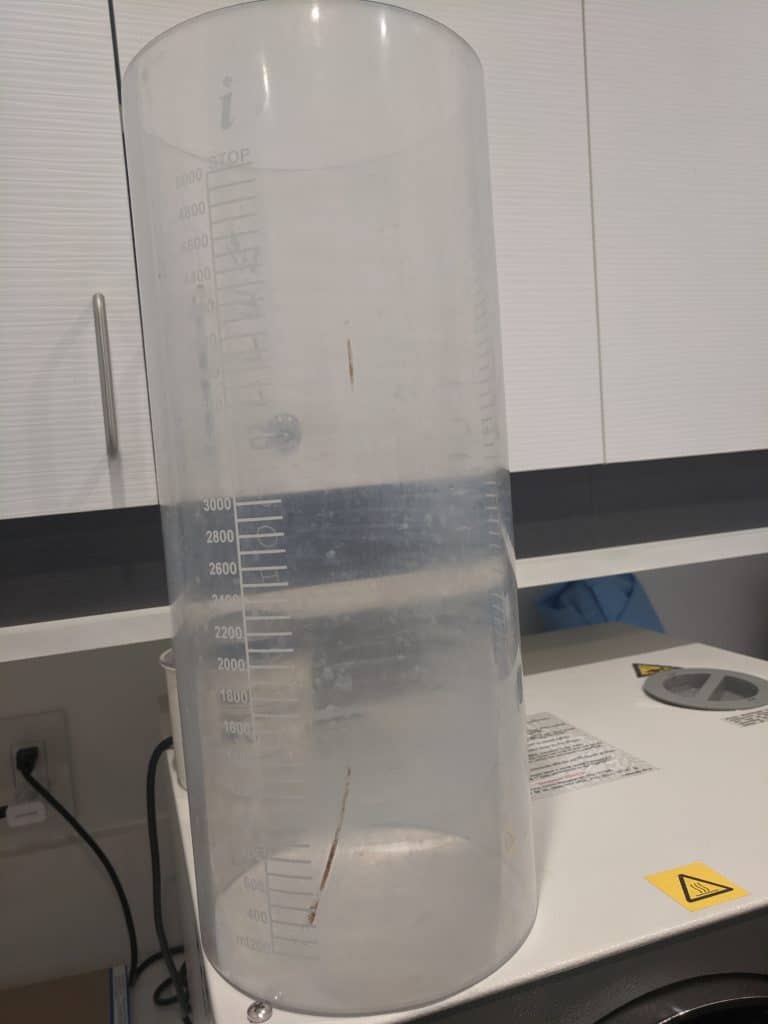

26-year-old female before and 6 months after her buttock enhancement procedure. Note the complete reshaping of her hips and buttocks areas
Introduction to Avoid Wells Johnson Cannister for BBL
Fat grafting to enhance the buttock is a very popular cosmetic surgery. In this procedure, the fat graft material is collected through liposuction prior to being transferred to a sterile cannister through a closed-loop-system. When performing this fat transfer, the fat volume is transferred back into the buttock in small aliquots to ensure that the fat material can re-establish blood flow. Let us look at an example of a patient below so you can appreciate why we recommend that you avoid wells johnson cannister for BBL.
Patient Example to appreciate why you should avoid Wells Johnson Cannister for BBL
One of the more serious complications of BBL remains fat graft becoming infection if the fat material is inadvertently contaminated. This complication is serious because the fat cells are infected as small packs of 0.5 to 1.0cc in volume.
For example, if you have 1000cc of fat injected into your buttocks, you must deal with 1000 to 2000 separate sites of infection that need to be drained.
Recently, I was called into the local hospital for another doctor’s patient who had an infection of her buttocks following BBL. She was nearly unconscious and on the verge of death.
She required four separate surgical incisions and drainages and five drainages performed by interventional radiology. Fortunately, she survived this nightmare complication, but her buttock contour was obviously severely compromised.
Steps taken to avoid an infection during a BBL
As such, many steps are taken to ensure the avoidance of contamination. The most effective precaution to take is to use a closed-loop system which describes a unique system of collecting, processing, and injecting back fat without exposure to the outside environment and to avoid Wells Johnson Cannister.

of uses
Why Wells Johnson Cannister should be avoided?
Wells Johnson canister shows discoloration and breaks in the lining after a couple uses. When there is a break in the lining of a cannister, then theoretically, it might create a closed space that is not amenable to appropriate sterilization. Due to the severe consequence of getting fat material infected during a BBL, we feel that until the company corrects early degradation of their cannister lining, patients should avoid the Wells Johnson Cannister for BBL surgeries.
Benefits of Closed-Loop Systems
Several closed-loop systems eliminate the risk of external contamination of the fat cells. One such system is to avoid Wells Johnson Cannister. The avoidance of external exposure and handling of fat tissues is what minimizes the risk of contamination. The closed loop system is accomplished by sucking the fat with a sterile cannula and directly into a tubing that then carries the fat to a sterile collection canister. The fat is then washed with an antibiotic solution without opening the canister.
The fluid of the washed fat cells must be drained after the fluid, and solid layers have settled or by using a filtration system. Once the fat cells have been compacted, they are injected back into the body through a similar tubing used to remove the fat. In this manner, the fat is never exposed to the outside air and potential contaminants.
A final advantage of the closed-loop system is that the collection, processing, and injection steps can be expedited. Using the closed loop system, the out-of-body time for fat cells can be limited to 30 minutes rather than an hour or two with the conventional syringe system.
Conclusion: Avoid Wells Johnson Cannister for BBL
The only prerequisite for a sterile canister is its durable lining that would create an impregnable barrier against potential contaminants. If the lining of the canister is brittle or prone to cracking, then potential air pockets that may compromise the sterilization process may become a theoretical concern.

